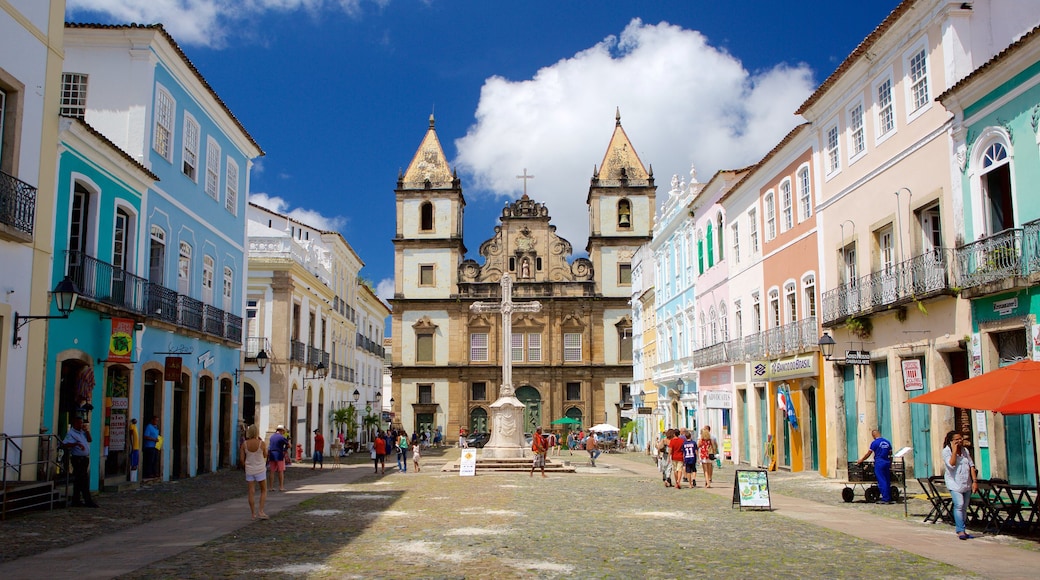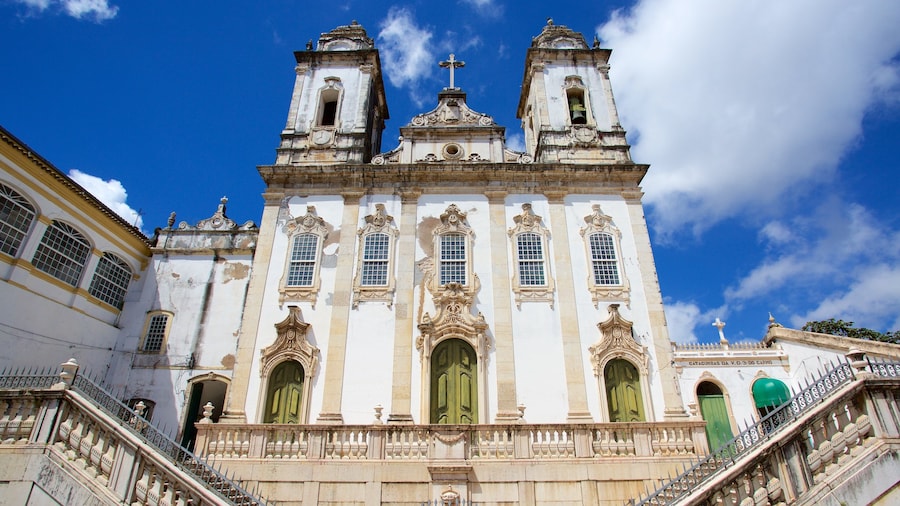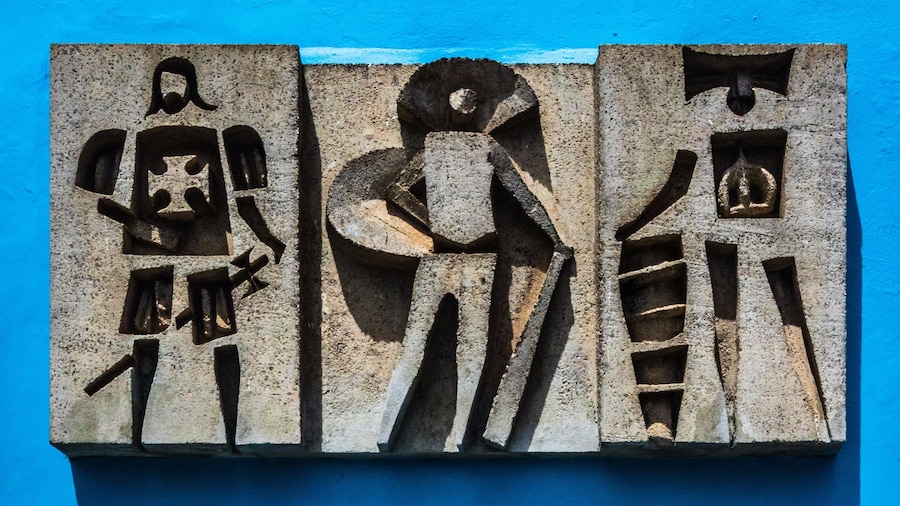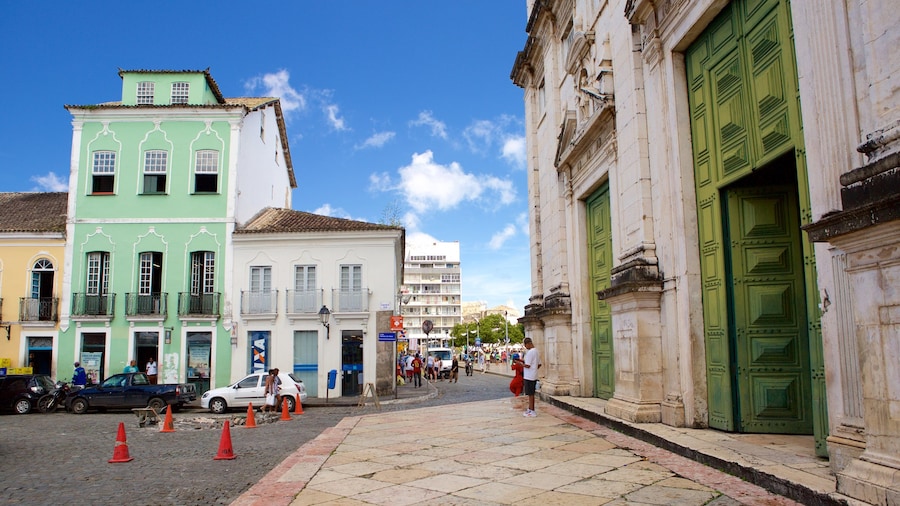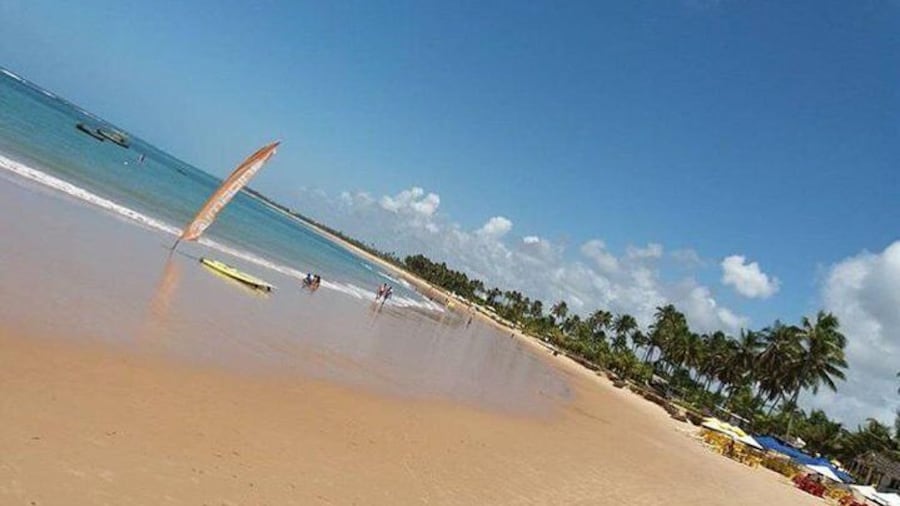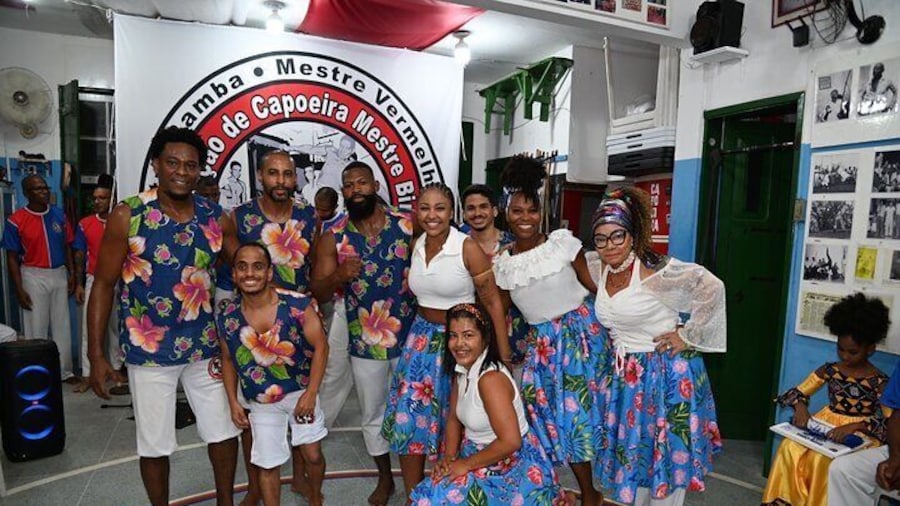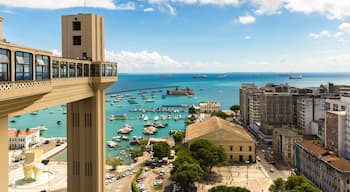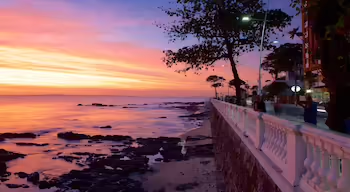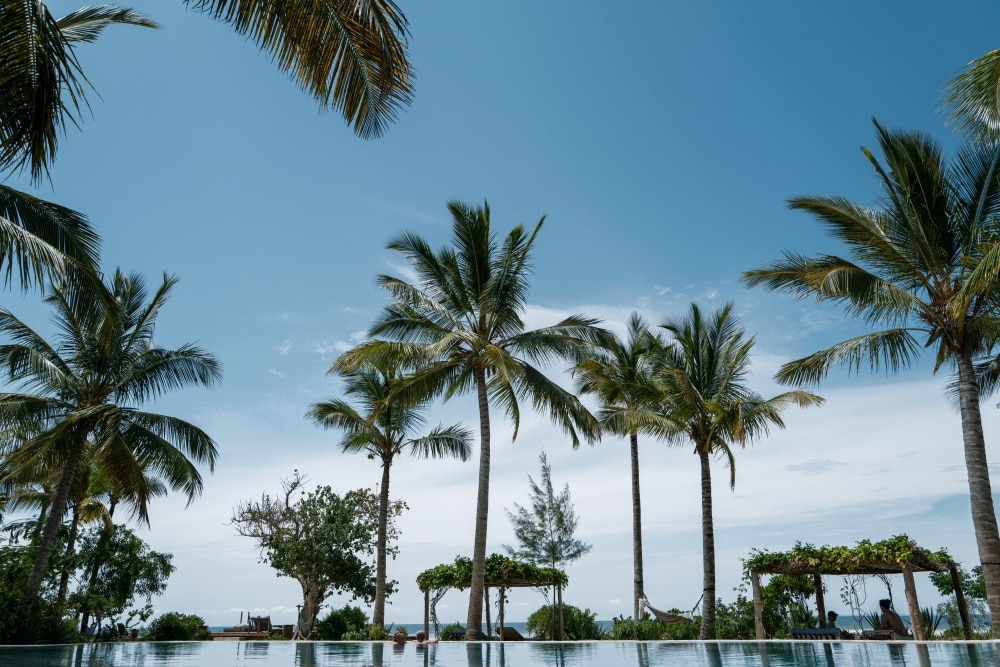The soul of Salvador’s Historic Centre is a vibrant district of cobblestone streets framed by ancient churches, colonial mansions, museums and cultural centres.
With its art galleries, inspiring architecture and museums, Pelourinho is one of the best places to experience the flamboyant atmosphere of Salvador. Pelourinho is the core and spiritual heart of the city’s Historic Centre, a district declared as a UNESCO World Heritage Site in 1985. Spend your time wandering along stone alleys and admiring well-preserved monuments from the 17th and 18th centuries. Sample Bahian cuisine at café-lined squares and enjoy performances of the capoeira martial art.
Start your tour of this historic neighbourhood in Largo do Pelourinho, a square that was once the site of public floggings. Visit Our Lady of the Rosary of Black PeopleOpens in a new window, a church built by slaves over a period of around 100 years. Come on a Sunday to witness a huge Mass service accompanied by Candomblé-influenced music. Stroll uphill past brightly painted colonial houses characterised by iron balconies and stucco work.
Go to the Fundação Casa de Jorge Amado exhibition centre. Browse the permanent displays that showcase the life’s work of famed Brazilian writer Jorge Amado. Close by is the city museum, Museu da Ciadade. Spot paintings by acclaimed Bahian artists, such as Presciliano Silva, plus pottery, tapestries and woodcarvings typical of the region.
Continue to Terreiro de JesusOpens in a new window, which is possibly Salvador’s most eye-catching square. Colonial mansions stand next to resplendent churches, including the Cathedral of SalvadorOpens in a new window, Church of São Pedro dos Clérigos and the Church of São Domingos Gusmão. Admire the architectural prowess from the cafés and restaurants, several with outdoor seating areas. Dine on two classic Bahian dishes: acarajé, deep-fried and spice beans, and moqueca, which is fish or shrimp stew.
While at Terreiro de Jesus, bargain with the vendors for regional handicrafts. Sit and watch impromptu capoeira dance performances. The south side of the square connects with Largo do Cruzeiro de São Francisco, which leads to the Sao Francisco Church and Convent of SalvadorOpens in a new window.
Located in Salvador’s city centre, Pelourinho is easily accessible by foot and via public buses. If arriving from the city’s beach suburbs then catch a bus bound for Praça da Sé and walk from there.
